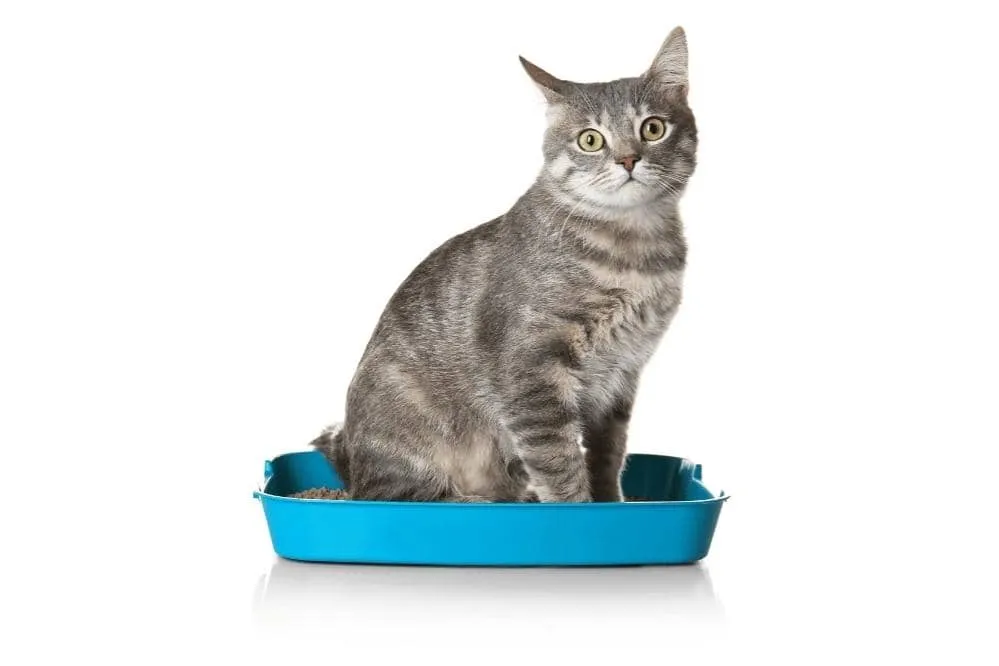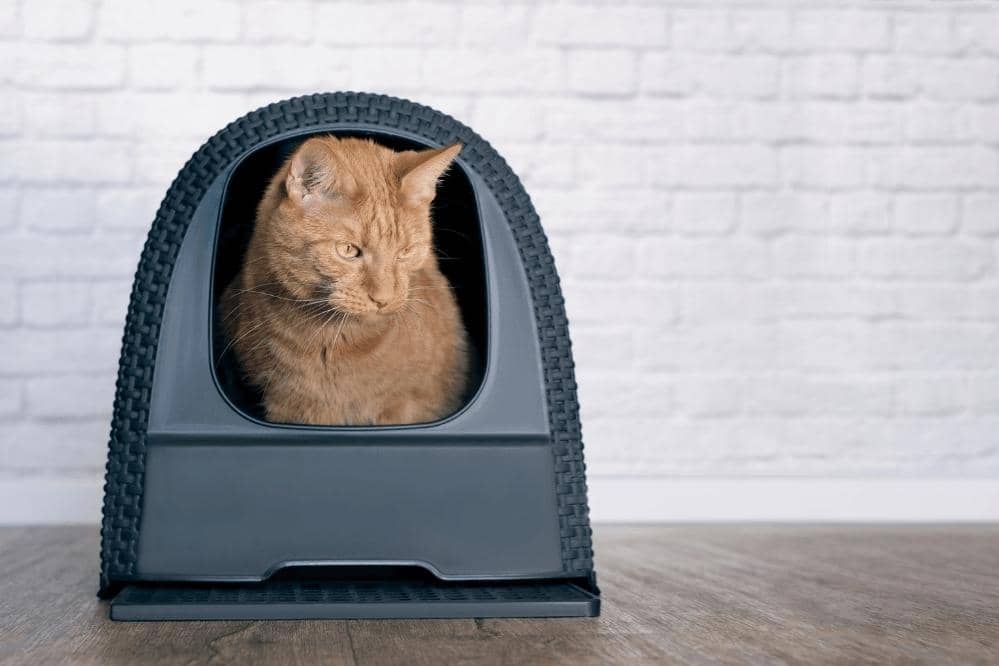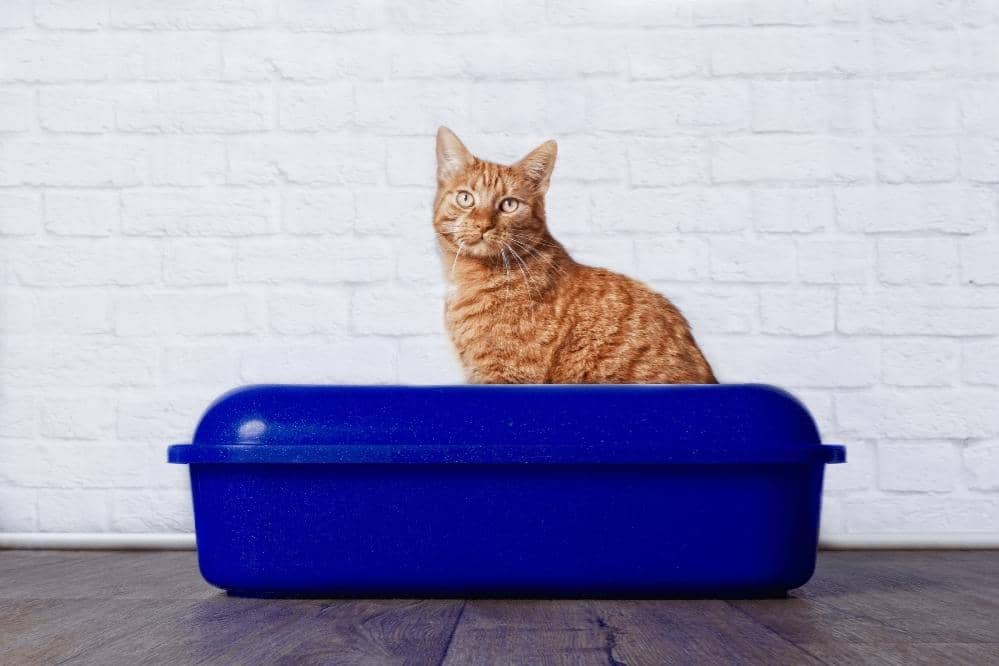How to Retrain Cat to Use Litter Box?

In many ways, caring for cats can be much like caring for young kids. Cats, especially young kittens, have a mind of their own and will do whatever they want, whenever they want. In some cases, this might mean training your cats to use the litter box may take some time and effort, but most cats will eventually grasp what they need to do, much like dogs do.
With that being said, for a variety of reasons, cats can sometimes seemingly forget how to use the litter box. This is often apparent when your cat stops relieving itself in the designated area and begins relieving itself elsewhere in the house. Fixing this problem can take some time, and a lot of that time spent is going to be focused on figuring out why your cat is no longer using the litter box.
Once you have determined a reason, you can begin working with your cat to try and retrain it.
Understanding What Went Wrong
One of the reasons why cats may knead soft objects with their paws is because it’s a throwback to the days of nursing from their mothers. When cats are kittens they nurse, which means that they suckle milk from their mothers.
When cats nurse, they often use their paws to knead the area around the nipple, which is to help get the milk flowing. This is a behavior left over from kittenhood. It may or may not phase out over time, but it is normal, not a cause for concern.
Comforting and Relaxing
First things first, you will need to rule out the possibility that your cat is not using the litter box due to health reasons, or reasons that retraining the cat won’t fix, such as a territorial issue with other animals in the house. There are a plethora of reasons why your cat could stop using the litter box. Some cats stop using the litter box because they no longer feel that it is a suitable place to relieve themselves, while other cats may genuinely forget that they need to relieve themselves in the designated areas.
As much as you likely won’t want to do this, you should try and get an idea of how your cat is relieving itself, and if it appears to be a health problem or if it is simply behavioral. Health problems will often mean that your cat is having trouble or pain when relieving itself, and then comes to associate its litter box with that pain, causing it to relieve itself elsewhere.
There will often be other signs of distress to look for as well in these cases. Other health problems can include marking territory and spraying. These problems are often found in cats who have not been spayed or neutered. If your cat seems to be depositing solids as it should, but there is cat urine elsewhere in the house and you know for a fact that your cat has not been spayed or neutered, this may be the cause of it.
Finally, the last health problem that can cause your cat to relieve itself outside of the litter box is incontinence. With this health condition, there will not be any particular place that the cat tries to relieve itself, but you may find small dribbling here and there, and there will be signs of it in your cat’s fur as well.
These problems should all be checked for and subsequently addressed before you try to retrain your cat. After all, if your cat knows that it should be using the litter box, but simply cannot use it for whatever reason it may have, then retraining it is not going to get the point across very well.
Now that you know what to check for and pay attention to, you should also give some consideration for behavioral problems that are not related to forgetting how to use the litter box. There are really only two problems you should check for. You will want to make sure that each cat in your house has its own separate litter box to use, and that no cats are being overly territorial about their litter boxes. If they are, this is a separate issue that you will need to address. Trying to retrain a cat who knows to use the litter box, but is physically blocked from it because of territory struggles is a futile fight to pick.
From here, you can begin learning the best ways to retrain your cat how to use the litter box.
Getting Ready to Retrain
The idea of retraining a cat to use a litter box is incredibly similar to teaching your cat how to use a litter box for the first time. Retraining a cat to use the litter box can be necessary if you have moved to a new house and everything is different, as your cat may not immediately recognize its “usual” location for depositing.
You will want to have a litter box that your cat likes, a brand of litter that your cat has previously liked, treats that your cat loves, and some of your cat’s favorite toys. You should also financially prepare for the fact that, depending on the problem, you may have to purchase different kinds of litter and boxes until your cat feels comfortable using the litter box. Unlike with dogs, cats need to choose their own litter boxes to feel comfortable using them, and if you try to force a decision onto the cat, it may become more stubborn.
Retraining Your Cat
First things first, you will want to make its new litter box enticing, helping the cat to associate the box with positive experiences. You should try to spend time with your cat in the same room the litter box is in, and you should also try to play with toys near the litter box. For cats who may be having trouble feeling safe or secure in a new home, this can be a great way to show your cat that the area where it relieves itself is a safe place. When doing this, you should not try to force the cat into the box. Instead, the most you should do is bring the cat near the box and let it investigate the litter box at its own pace. If the cat seems particularly nervous, consider rewarding it with treats if it investigates the litter box, further associating positive experiences with the room and with the box itself.
While focusing on this, you should try and see if your cat has any particular places it prefers to relieve itself at. If your cat is not using the litter box because it has seemingly forgotten how, then it will likely be choosing areas that make it feel comfortable relieving itself.
Once you find those places, you will want to try to make them as unappealing to the cat as possible, so that your cat is not tempted to go back to old habits.
Darker hiding spots should be kept brightly lit, preferably with motion-activated lights.
Rugs and similar textured coverings should have tin foil or double-sided tape covering them so the cat isn’t inclined to stand on it.
Curtains should be kept out of reach until your cat is successfully using the litter box on a regular basis.
Furniture should be covered with either plastic sheets or plastic shower curtains, and should not have any cloth coverings.
Bathtubs, sinks, and similar areas should be filled with a thin layer of water so your cat will not want to stand there.
If your cat really has a place that it favors, consider either placing the litter box in that location to help it associate the litter box with droppings, or consider putting the cat’s food there.
By their nature as clean animals, cats often refuse to relieve themselves in the same area that their food is in. Which one will work for you will depend on the placement and the amount of space in the area where your cat prefers to relieve itself.
By both making the litter box more appealing and associated with dropping and positive associations, and also making the cat’s previous relieving areas more unappealing or potentially even inaccessible, you can try to show your cat where it should be relieving itself.
With enough time, patience, and dedication, your cat should begin using the litter box more and more, allowing you to live in a cleaner home.



